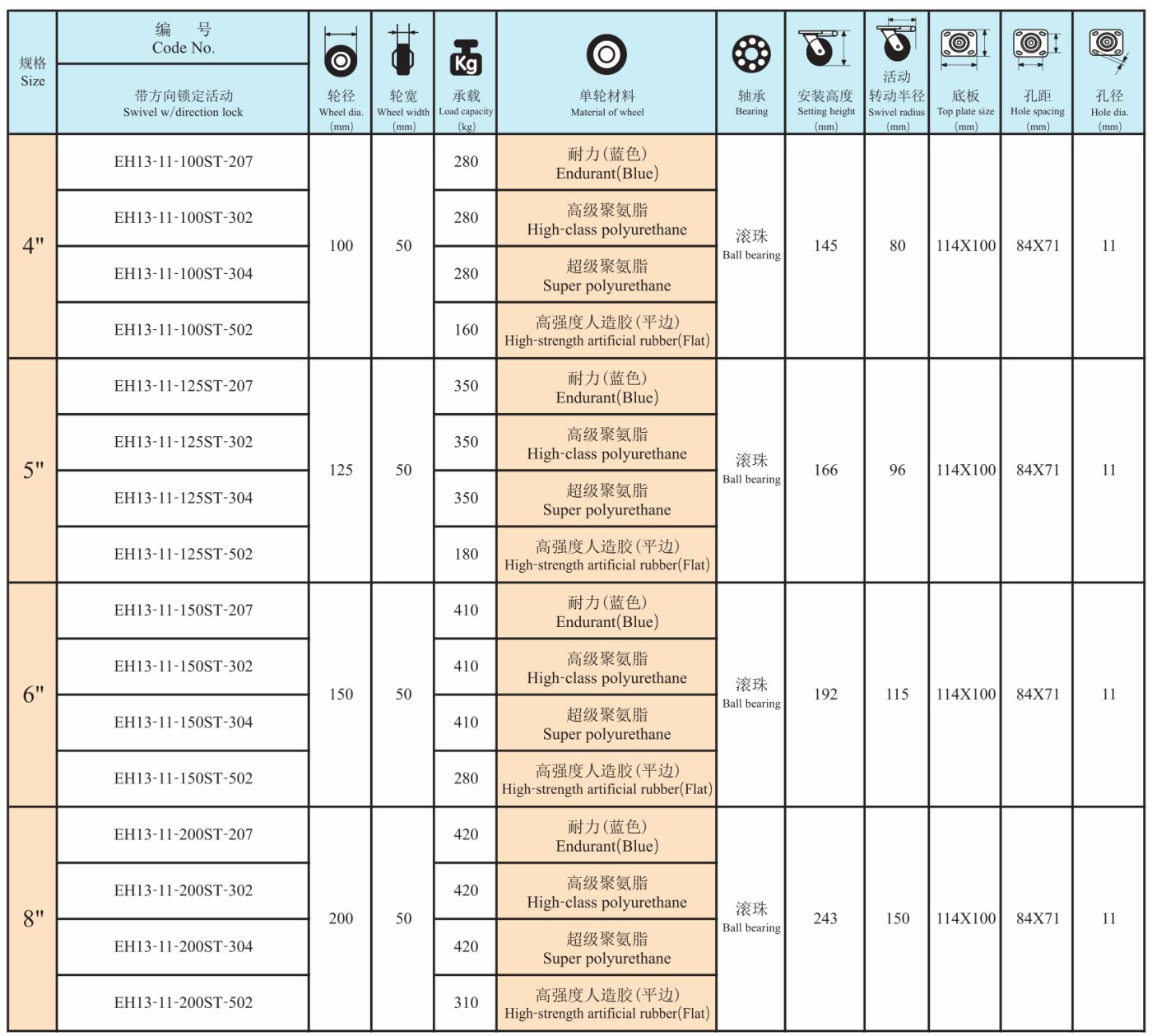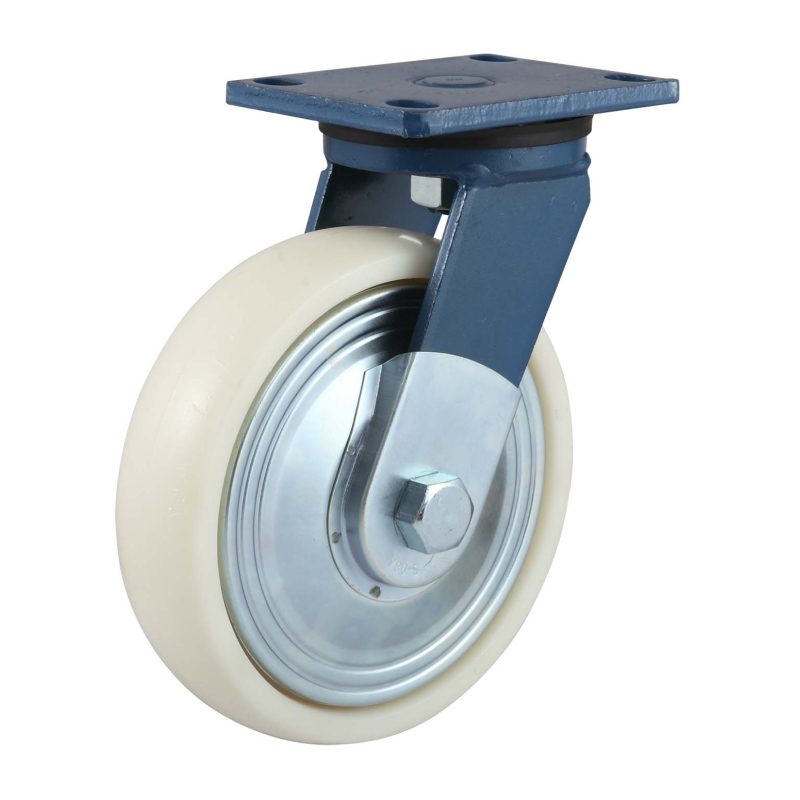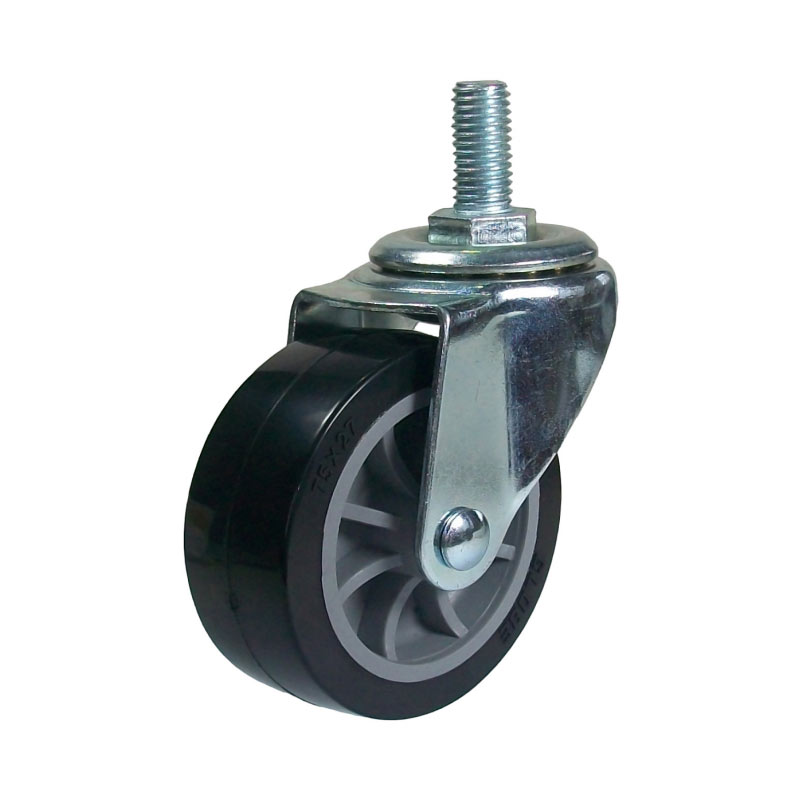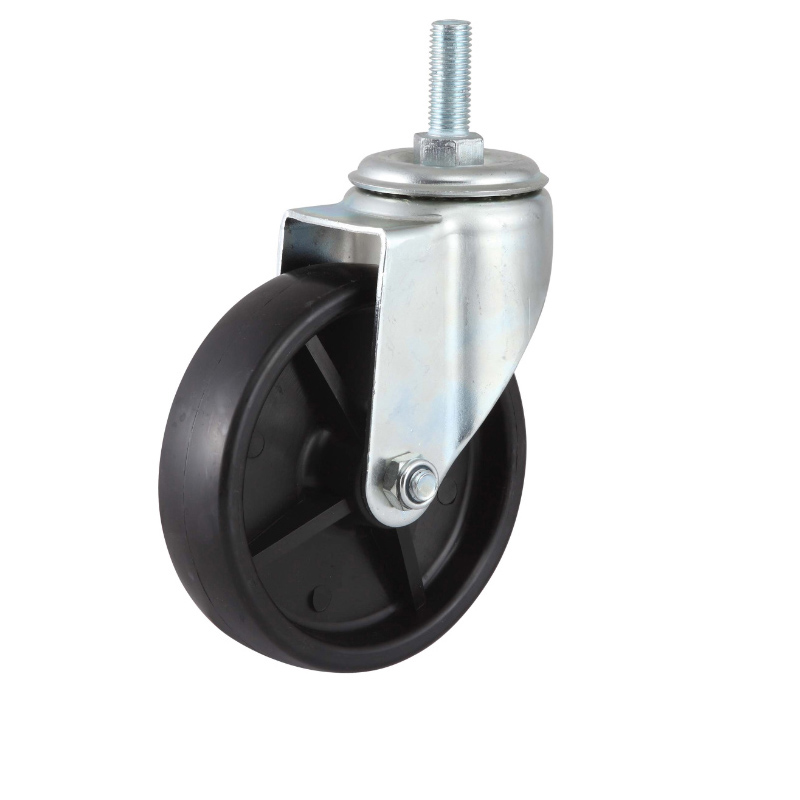18 Years Factory China High Heat Resistant Casters Factories - EH13 Series-Direction lock-Swivel(Zinc-plating) – GLOBE
18 Years Factory China High Heat Resistant Casters Factories - EH13 Series-Direction lock-Swivel(Zinc-plating) – GLOBE Detail:
Advantages on our products:
1. High quality materials purchased with strictly quality check.
2. Each product checked strictly before packing.
3. We are professional manufacturer for over 25 years.
4. Trial order or mixed orders are accepted.
5. OEM orders are welcome.
6. Prompt delivery.
7) Any type of casters and wheels can be customized.
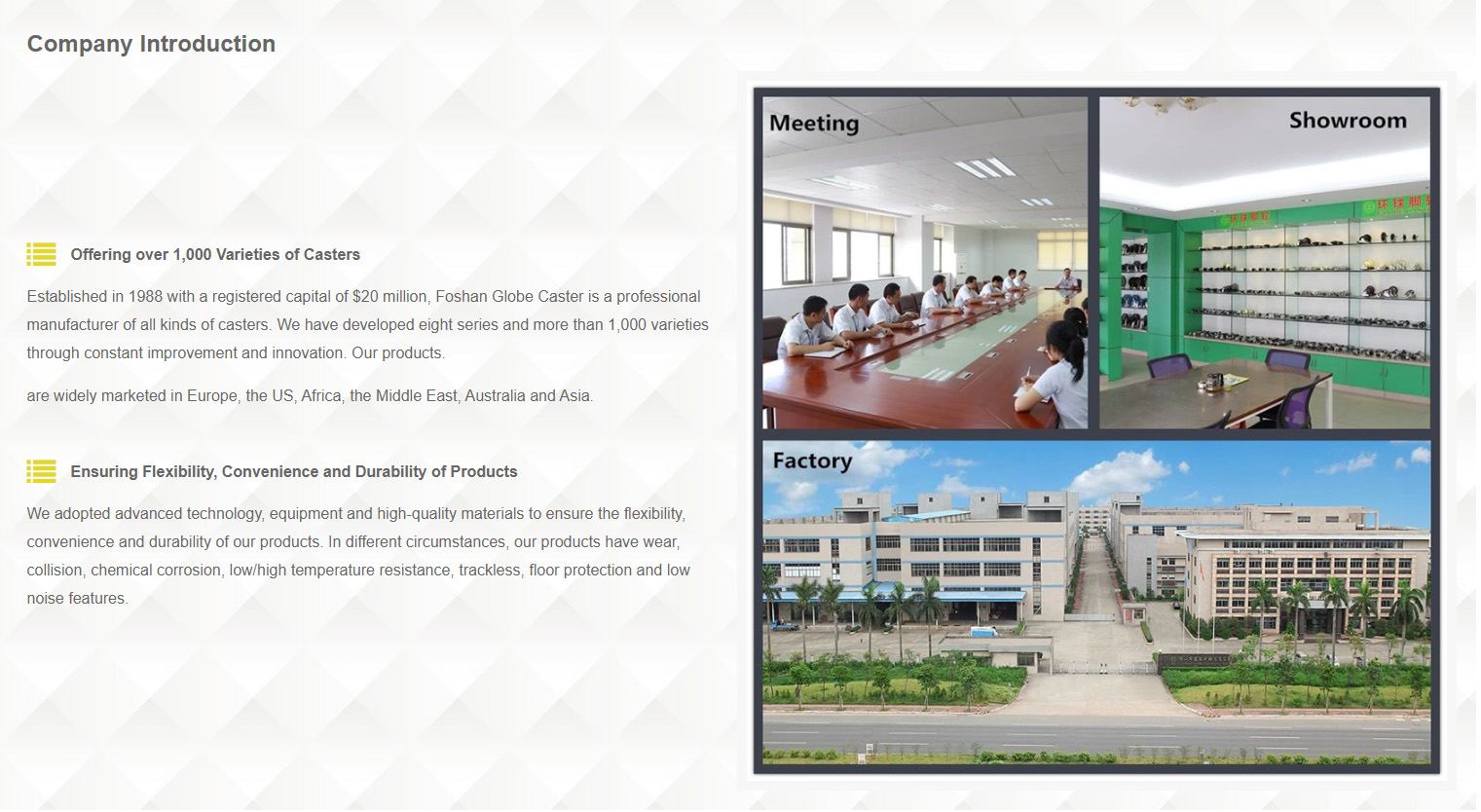
Contact Us Today
We adopted advanced technology, equipment and high-quality materials to ensure the flexibility, convenience and durability of our products. In different circumstances, our products have wear, collision, chemical corrosion, low/high temperature resistance, trackless, floor protection and low noise features.
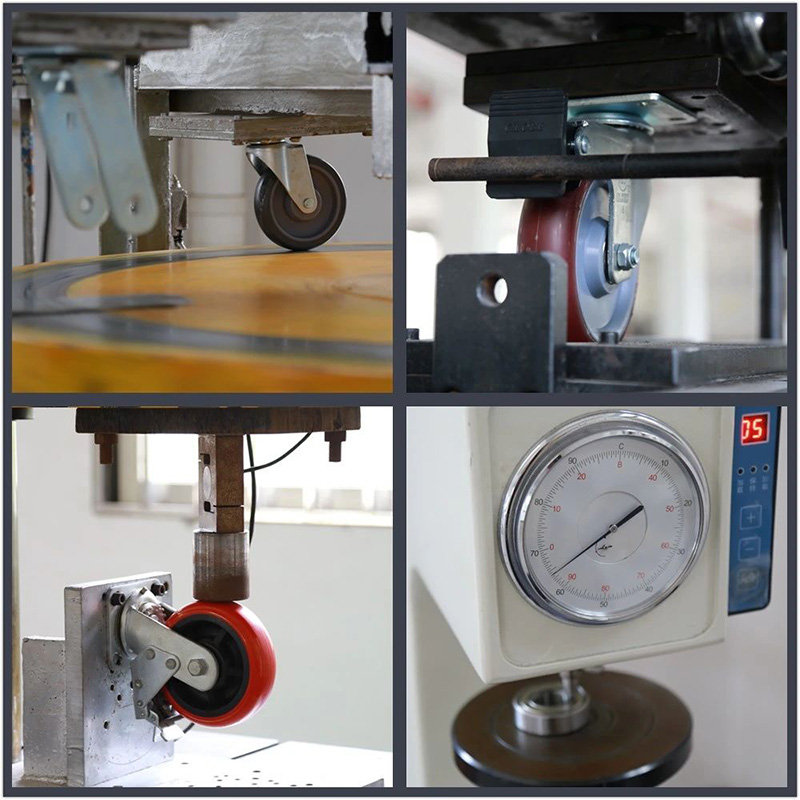
Testing
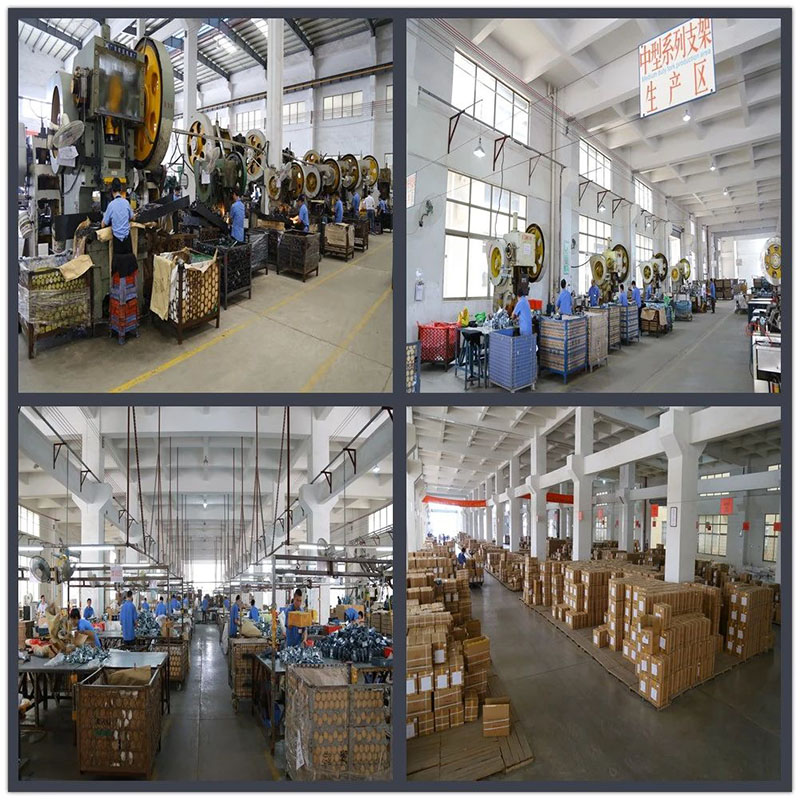
Workshop
Installation steps of polished casters
1. Prepare casters and tools
Find the screw movable caster that needs to be installed, and correspond to the location that needs to be installed.
2. The installation position has corresponding screw holes
The movable casters must be customized and the corresponding screw holes will be added to the installation position, so that only the casters need to be screwed in and stabilized.
3. The installation location is not standard
Need to tap manually, pay attention to the same diameter as the screw rod, and then screw in the caster, and firmly, and that’s it.
4. Test run
After installation, you need to test it to see where there are problems, and you need to make minor adjustments.
The polished casters only need to be inserted into the corresponding mounting holes to be installed. If there is no mounting hole, you need to manually add the corresponding mounting hole.
8 performance parameters should be paid attention to when choosing casters
There are many performance parameters for casters. When choosing a caster, these 8 parameters are also important indicators. Let’s look at them one by one below.
1. Hardness
It is used to measure the hardness of rubber and other tire and wheel core materials. It is represented by Shore “A” or “D”. Compressive strength During the compression test, the maximum compressive stress that the sample bears, in units of banknotes megapascals.
2. Elongation
Under the action of tensile force, the ratio of the increase in the distance between the marking lines when the sample is broken to the initial gauge length, expressed as a percentage.
3. Impact strength
The ability of the material to withstand the violent impact of free falling heavy objects. It is expressed in inches/pounds, feet/pounds, or punching work at the test temperature.
4. Deformation resistance under heavy pressure
After a long time, the wheel landing site becomes larger and flattened, that is, the test sample bears a certain static pressure load, and then the load is removed after the specified pressure time is over. The height of the wheel landing site after the change of the meter is compared with the original height percentage.
5. Water absorption
The increase in the weight of the test sample. It is expressed as the percentage of the weight of the sample after a specific procedure test to the initial weight.
Six, working temperature
Operating temperature range measured under rated load.
Seven, adhesion
The force required to peel the tire from the bonded wheel core at a speed of 6 inches per minute is calculated in pounds divided by the straight width of the tire.
8. Tensile strength
The force required to break the wheel from the cross section. Divide in pounds by the area (square inches) of the cross-section of the sample.
Product detail pictures:
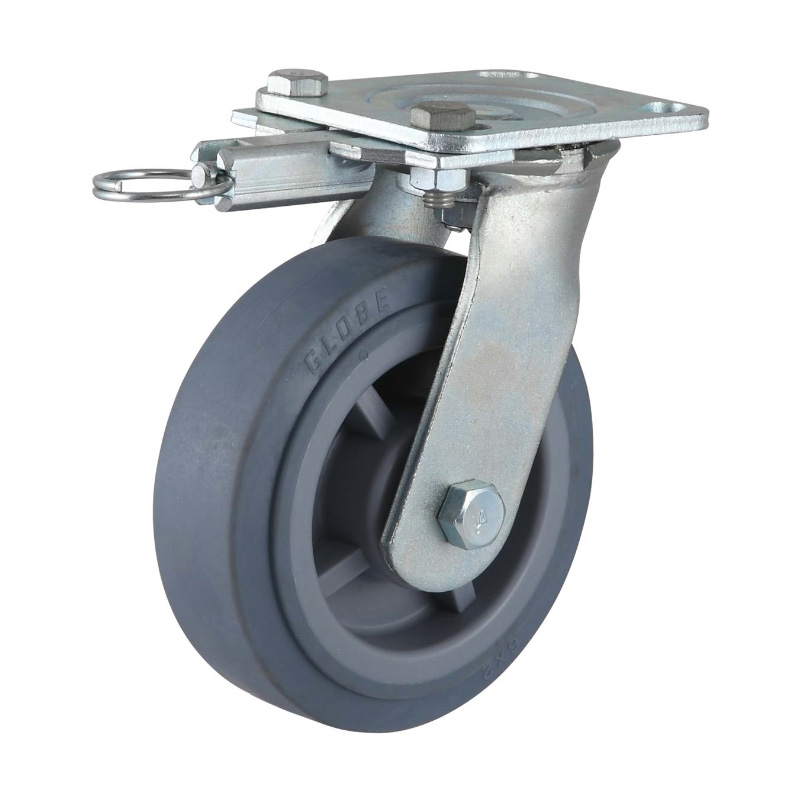



Related Product Guide:
The corporation upholds the philosophy of "Be No.1 in high quality, be rooted on credit rating and trustworthiness for growth", will continue to serve outdated and new consumers from home and overseas whole-heatedly for 18 Years Factory China High Heat Resistant Casters Factories - EH13 Series-Direction lock-Swivel(Zinc-plating) – GLOBE , The product will supply to all over the world, such as: Toronto, Benin, Johor, We always adhere to follow the honesty, mutual benefit, common development, after years of development and the tireless efforts of all staff, now has perfect export system, diversified logistics solutions, comprehensive meet customer shipping, air transport, international express and logistics services. Elaborate one-stop sourcing platform for our customers!
The accounts manager made a detailed introduction about the product, so that we have a comprehensive understanding of the product, and ultimately we decided to cooperate.


